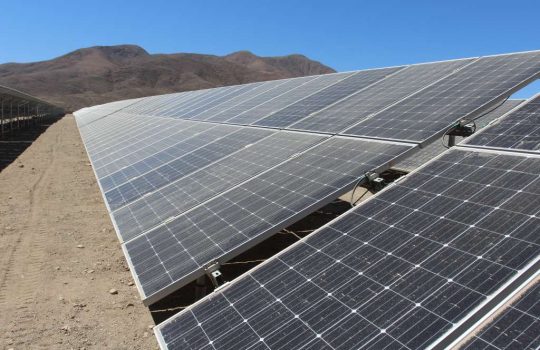
If the experts’ forecasts are fulfilled, this phenomenon is expected to last at least until 2024. Currently, installed capacity is almost double the national peak demand.
Energy contracted in previous bids would exceed demand by nearly 30% by 2019
Energy demand is directly associated with the country’s economic growth, and projections are not auspicious. That is why today some market players are warning that there is overcapacity in the system.
Some of this was seen in the last electricity supply tenders awarded in August, where seven times more than the auctioned supply was bid, an unprecedented figure. This is despite the fact that in July the supply was adjusted by 1,200 GWh, from 13,750 GWh to 12,550 GWh.
Projections have been corrected downward
According to the projections of the company Systep, in the segment of regulated customers (mainly residential), the energy contracted in the auctions of recent years will exceed demand by about 30% in 2019, although this includes a variable component of 10%, as specified by the general manager of this firm, Rodrigo Jimenez.
The executive explains that although it is normal to maintain a contracting above the expected demand, this overcontracting is due to the fact that the projections that were considered at the time of the bids have been strongly corrected downwards. He adds that this condition should not be maintained in the long term if the National Energy Commission (CNE) considers the lower growth of demand in the amount of energy to be tendered in future processes.
“Indeed, electricity demand has not grown at the expected rates. If three years ago a growth of over 5% was expected, today it is estimated that it will be less than 4% in the next 5 years, for free and regulated customers. In 2015, demand in the SIC grew at 1.2% and this year it has grown at 2.3%”, warns Systep’s general manager, Rodrigo Jiménez.
Ramón Galaz, director of Valgesta, assures that today the reserve margin of the system -understood as the difference between installed capacity and maximum demand- is over 100%, considering both the SIC and the SING. “Although not all of it corresponds to firm capacity, this means that no new capacity is required today, in addition to the existing capacity and that which is under construction or planned for it. According to our estimates, this would continue until at least 2024, assuming that all the projects are completed and that there is an average growth rate in demand of between 3.5% and 4% per year”, explains Ramón Galaz.
The executive comments that in the 2013-03 tender 12,000 GWh were awarded that must be supplied in large part with new projects, while in the 2015-02 tender 1,200 GWh were awarded that must also be sustained with new plants, and in the last tender of this year about 6,500 GWh of the total tendered must be supplied by new projects.
Last bids were awarded at US$ 47.5 per MWh on average
Francisco Aguirre Leo, executive director of Electroconsultores, emphasizes that today the system is “overinstalling power”, and the installed capacity is almost double the maximum national demand. However, he points out that it is no longer necessary to talk about installed capacity versus peak demand (which means power), but about the consumption to be satisfied -understood as annual or monthly energy in MWh or GWh- versus the supply of generable energy. “It is this balance of energy required versus offered that best expresses the oversupply,” he says.
This is because it is not the same to talk about a 100 MW coal plant as a wind or solar plant with the same number of MW, because the latter can produce a third less energy, which is what is really useful, he explains.
In fact, he adds that confusing energy and power is common and a big mistake. The last tenders, for example, were awarded at an average price of US$ 47.5 per MWh, but this does not mean that this reduction will have a direct impact on electricity bills, because it only corresponds to the energy component, which is equivalent to 70% of the bills, but there are also other aspects, such as transmission and power, among others. The current excess power in the system could lead to overinvestment, and these costs would then probably be passed on to tariffs, and this, together with the advances in transmission – which consumers will also have to pay for in part – will mean that we will not see such considerable reductions.





